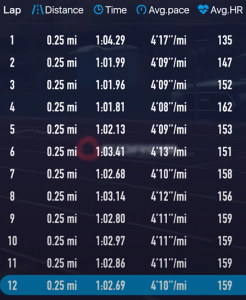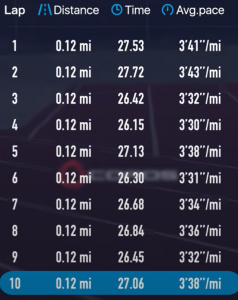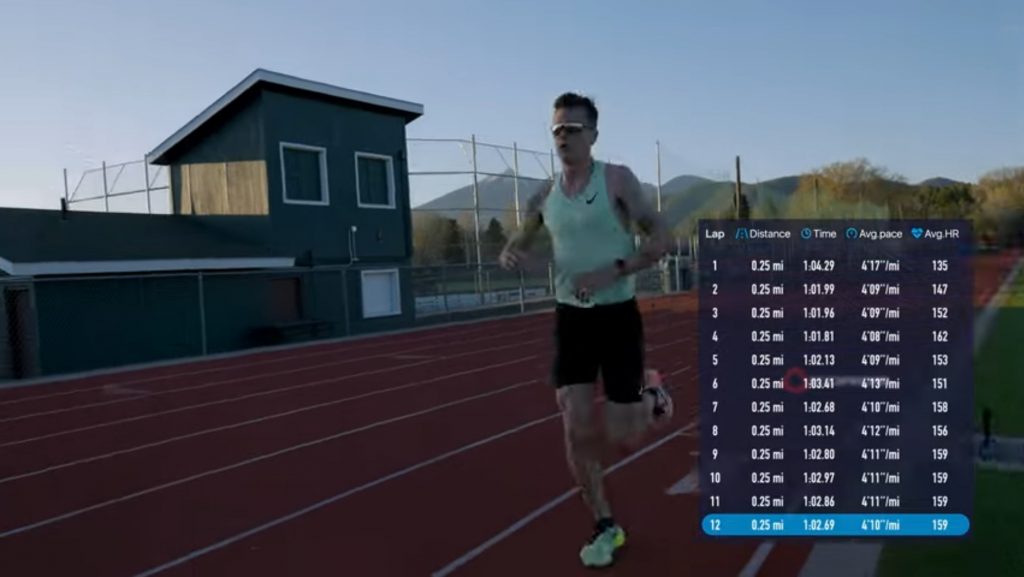Dear Distance Gurus: What Do You Think of Jakob’s Recent 12 x 400, 10 x 200 Workout in Flagstaff?
LetsRun.com has launched a new coaching advice column. In column #4, John Kellogg and Robert Johnson give their thoughts on Jakob Ingebrigtsen's recent 12 x 400, 10 x 200 workout
By Robert JohnsonIn the year 2024, there are all sorts of advice columns all over the internet, but we’ve never seen one for distance running. That is now changing. Back when LetsRun.com started in 2000, John Kellogg‘s near-daily message board postings on training were a hallmark of the site, but he’s gone dark from the web for 20+ years. That’s changing too.
Hopefully each week, John and LetsRun.com co-founder Robert Johnson will be answering your questions in our “Dear Distance Gurus” column. John is most famous for transforming Weldon Johnson from a college hack with a 30:06 10,000 PR to a near-Olympian who ran 28:06 and finished 4th at USAs twice. Robert and John then used John’s training methods to win zero Ivy League XC titles totally dominate the Ivy League in indoor and outdoor track during a 10-year coaching stint at Cornell University where they captured 13 Ivy League track titles.
Now that the statute of limitations from their Cornell tenure is over as almost everyone they coached is retired, they will be handing out their advice on LRC. If you have a question for a future column, email it to DDG@letsrun.com.
Question #1
Dear Distance Gurus:
What did you think of Jakob Ingebrgitsen’s workout that was filmed by Coros and FloTrack? What does it tell us about his current fitness?
– Josh K. in Seattle
Rojo: In case people don’t know what the workout was, it was 12 x 400 with a minute rest in Vaporflys followed by 10 x 200m with 200m walk/jog recovery in spikes, all run in somewhat windy conditions in Flagstaff, Arizona, which is at approximately 7,000 feet of altitude. Jakob averaged 62.73 on the 400s and 26.83 for the 200s. You can see the individual splits in the screenshots below.
What’s crazy about this workout is when I asked John Kellogg, “What do you think of those 400s? How would you describe those 400s? What is 62-63 pace at 7,000 feet of altitude?” I was thinking he’d say oxygen uptake, processing lactate, etc., but he replied, “Race pace.”
Then it hit me. 62-63 isn’t Ingebrigtsen’s PR pace for any distance he runs, but if you convert it to sea level times of 60-61, you realize this workout really was the perfect combo workout for him. He worked his 5,000 race pace on the 400s and 1,500 race pace on the 200s (maybe a tad quicker on the 200s, but he did say there was a tailwind on those and a 200 will be a little faster at altitude).
Almost all of our interval workouts at Cornell involved different paces like this. Longer reps first to work on endurance and shorter reps to touch on speed.
John Kellogg: I liked that he had a good mix of art and science. Even in an era with GPS watches, heart rate monitors and portable lactate meters, you have to learn how to go by feel and he emphasized that a lot. He knew that his lactate reading won’t always show him the big picture, due to recent fatigue, etc. And his sense of pace is quite good – his first 200 was right on. He wanted 27.5 and it was 27.53. Even with a tailwind and lower air resistance (altitude), he could sense how fast he was moving.
On the 400s, that attitude of letting the pace come to you when you’ve got a fair number of reps to do, particularly when you’ve been doing a lot of aerobic work, is good.
But the thing I liked the most about it was something barely mentioned in the video – the overall distance for the day was 30k. There really isn’t any substitute for running that much. Even with the new shoe technology allowing you to run faster on your easy days or do the double threshold days and still recover quickly, you’re still going to be a better runner if you run a lot. And he’s playing to his strength, which is being an aerobic monster compared to most 1,500 specialists.
Rojo: I agree. He’s never going to be faster than Jake Wightman at 800 so he has to be stronger, much stronger. I’m not opposed to Jakob running an 800 race or two like Nico Young did, but the reality is in a 1,500, you almost never need to be running faster than 25.5.
He still needs to work on his short speed but you only need short doses of super fast stuff (Hobbs Kessler talked on the Coffee Club podcast about flying 40s last week). I think far too many runners obsess over their weaknesses instead of doubling down on their strengths.
As for what it tells us about his fitness, I think it’s impossible to say based on one workout, particularly since we don’t know how hard he was running. Yes, they showed his average heart rate but not his max, and more importantly they left out the lactate levels even though he took them twice.
I don’t think it’s an overly impressive workout for someone of his ability. But Jakob fans maybe should be happy it wasn’t overly impressive since it meant he might not have been hammering too hard in a May workout. Remember this? In 2022, Paul Chelimo posted a 16 x 400 workout with 1 minute of rest that he did in 58+ at 6,100 feet of elevation. Two weeks later, he was horrible at USAs (11th in 13:24).
MB: Paul Chelimo 16×400 at 58/9
What do you think it means about his fitness John?
JK: True. We can’t know exactly what he can do at any race distance just by watching him do some 400s and 200s. Any 5,000 Olympic finalist could probably hit those times under the same conditions, given a reasonable pre-season. In fact, a lot of national-class college runners might do it, but not without forcing the fertilizer out of it, and just because you can do something doesn’t always mean you should. After Chelimo did those 16 quarters, I figured it was indicative of 12:40-low fitness – and that was before I learned it was done at altitude! But, alas, if he had a 12:40 or faster in him be-fore that workout, he didn’t after it. So hopefully Jakob was keeping it right where it should be, and I’m pretty confident he knows what to do, when to do it, and how it should feel on the day in order to get the best results in combination with his buildup and other recent training. You never really know what you can do until you do it, but he’ll probably be fine.
Question #2
Supporter’s Club member here. Really enjoyed your article on your favorite mile workouts. Question for you. I am 41 and am trying to break 5 minutes in the mile. I am focusing more on pure speed as I believe I have lost quite a bit of speed. What all out 800 time should I be shooting for to be able to run a 5 minute mile. This morning I ran 2:23, which I think I need to get down to 2:15 or lower. Thoughts?
Thanks,
Ryan S.
JK and Rojo: You are correct. Most people would need to get down to at least 2:15 for 800 to be able to run 5:00 for a mile (the “equivalent” on JK’s chart is actually 2:13.62) although it’s possible to do for some who are much, much better at the mile with only a 2:18 PB. So you’ve got at least 5 seconds to go (probably a few more than that to be safe).
Got a question? Email us DDG@letsrun.com.
Talk about your favorite Jakob’s workout and this column in our world-famous fan forum / messageboard.
Previous: Column #1 What Do You Think Of Hobbs Kessler Doubling Every Day?
Column #2: What Are Your 3 Favorite Mile Workouts?
Column #3: What Are Your 3 Favorite 800 Workouts?
While coaching at Cornell, Rojo and JK had a lot of mid-d success. Highlights included guiding the Big Red to an Ivy League record in the indoor DMR with their best miler on the sideline, winning 5 straight IC4A 4 x 800 crowns, but they were perhaps best known as experts at teaching a guy on how to cross the finish line first at conference but get DQ;d on multiple occasions, once for fouling his own teammate and once for raising his fist in victory 50 meters from the finish line and then bowing to the crowd after winning.






